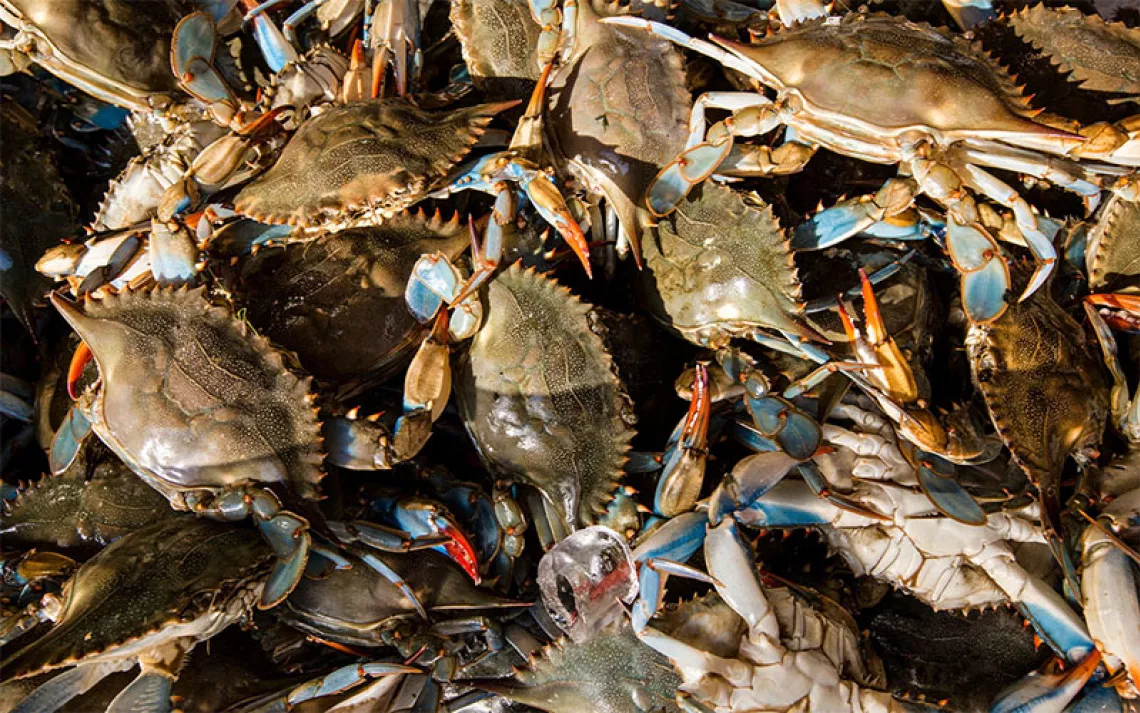Is This How We Will Save Wild Salmon?
“Salmon emphasis areas” go down more easily than “wilderness”

Salmon sanctuary or emphasis area designations would protect habitat for coho and other wild salmon, steelhead, and trout by making fish habitat conservation a priority management goal. | All photos by Jim Yuskavitch
Frank Moore is a fly-fishing legend—at least along Oregon’s North Umpqua River, which has been renowned for its summer steelhead since the 1930s, when Western fiction author Zane Grey fished its waters. Moore is a D-Day veteran; he returned after the war to live beside the river with his wife, Jeanne. Together, they became among the North Umpqua’s most vocal and effective advocates. In 1966, they founded the Steamboaters, a group of local angler-conservationists who still zealously guard the welfare of the river and its population of wild and wily steelheads.
Now a coalition of fish conservation groups is seeking to extend the Moores’ lifelong contribution into the future with a Frank and Jeanne Moore Wild Steelhead Sanctuary that will protect vital spawning habitat. Beyond that, the effort may prove to be a viable alternative to more restrictive approaches (like wilderness or wild and scenic river designations) in an inclement political era.
The goal of the sanctuary—an approach largely spearheaded by the Portland-based Wild Salmon Center—is to permanently protect salmon strongholds from future habitat degradation. Most such areas, says Mark Trenholm, the center’s senior program manager, are stressed and in need of recovery. “We are trying to save the last best places for salmon,” he says. Among other campaigns are a 60,000-acre Elk River Salmon Emphasis Area (SEA) on Oregon’s south coast, a 28,000-acre Kilchis SEA on the north coast, and an ambitious proposal for a 700,000-acre Copper River Salmon Reserve in Alaska’s famed Copper River Delta.

Sign up to receive Sierra News & Views
Get articles like this one sent directly to your inbox weekly.
With this action you affirm you want to receive Sierra Club communications and may vote on policy designated by the Sierra Club Board.
Unlike traditional land protection strategies like wilderness designations, salmon emphasis areas don’t need to meet stringent wildness criteria. They can include fish-conservation-management directives such as habitat restoration without precluding other uses of the land, like logging and motorized vehicle access, theoretically making them less controversial and easier to get through Congress.
The Frank and Jeanne Moore Wild Steelhead Sanctuary would encompass 104,000 acres in the Steamboat Creek watershed within the Umpqua National Forest, probably the North Umpqua’s most important steelhead-spawning tributary. “The basic premise is to give the Forest Service direction that gives wild fish priority,” says John Kober, executive director of Portland-based Pacific Rivers, the organization that has been at the forefront of the sanctuary campaign.

Jeanne and Frank Moore talk wild steelhead conservation at their home above the North Umpqua River in the southern Oregon Cascade Mountains.
Supporters of the sanctuary stress that it would still allow other natural resource uses. “This is a wild-fish-emphasis area, but it is not a wilderness area,” says Oakley Brooks, the Wild Salmon Center’s communications director. “There will be logging. Frank is adamant that he does not want to lock the place up, but he wants to protect wild steelhead.”
Even so, salmon sanctuary advocates find themselves battling against the current. The proposed Elk River SEA in the Siskiyou National Forest on Oregon’s south coast, for example, would have established a 60,000-acre preserve on public land to protect the Elk’s runs of Chinook and coho salmon and steelhead. Old-growth forests would be protected, but otherwise logging would have been allowed. But despite lots of local support, the proposed legislation faltered.
“It never really settled into a slot,” says Jerry Becker, a consulting forester and founder of the Friends of the Elk River (now Wild Rivers Land Trust). “It kept getting revised and ultimately never got a bill or a hearing.” Becker notes that the Forest Service was also reluctant to sign on to a new management designation. Proposals for salmon emphasis areas on Oregon’s north coast were caught up in a lawsuit by a number of county governments, who accuse the state of illegally reducing logging in state forest. The Copper River Salmon Preserve campaign has also faltered.

If eventually designated as wild and scenic, most of the Elk River’s headwater tributaries will be protected by buffer zones but won’t include salmon-specific conservation measures as intended in the original Elk River Salmon Emphasis Area proposal.

Wild fall Chinook salmon spawn in a southwestern Oregon coastal stream. Salmon sanctuaries would ensure that wild salmon and steelhead spawning and rearing habitat would be protected from human development and disturbance.
Salmon-protection efforts have not halted, however. Oregon’s Democratic senators, Ron Wyden and Jeff Merkley, are sponsoring the Oregon Wildlands Act, which would create two new wilderness areas and designate most of the Elk River’s major upper tributaries as wild and scenic (although it would not give as much protection as the original salmon emphasis area proposal). And coalitions of conservation groups have worked with the Oregon Department of Fish and Wildlife to designate 20 coastal watersheds as Wild Fish Emphasis Areas, where no hatchery salmon or steelhead will be stocked for the next 10 years.
But at the moment, the bright spot for salmon-specific protective designation is on the North Umpqua. With the support of senators Wyden and Merkley (and Representative Pete DeFazio), Senate Bill 513 would create the Frank and Jeanne Moore Wild Steelhead Special Management Area. (The word ‘sanctuary’ was dropped because of Republican concerns that wild-fish advocates were trying to establish a new protective designation—which they are.) “All we need now,” says Kober, “is to attach it to a must-pass bill.” If the Moore sanctuary succeeds, it could make the upstream journey to the next salmon sanctuary a little less difficult.
 The Magazine of The Sierra Club
The Magazine of The Sierra Club



